Abraham Lincoln: The Man
... elected in the autumn of 1860 and formally inaugurated as the sixteenth
President of the United States of America on March 4, 1861.
Section I is devoted to Dr. Joseph Nathanson and his collection of Lincolniana. Displayed are portraits of Dr. Nathanson taken in his New York home surrounded by items from his life-long study of Lincoln. Shown also is an autographed copy of Carl Sandburg's biography of Oliver Barrett — the Lincoln Collector.
Continuing there are selected portraits of Lincoln taken or painted during the five years of his presidency — portraits which reflect, for the most part, the anguish and stress of his political life.
The toll taken by the Civil War, with its horrific losses, and the possible break up of the Union weighed heavily on the man. To these were added his own personal tragedies, especially the death of his two sons, four-year old Edward in 1850 and twelve-year old Willie in 1862. Lincoln himself was confronted by death early in his own childhood — his baby brother Thomas died when Abraham was three and when, ten, his beloved mother, Nancy Hanks, died. His childhood and youth were rigorous, those of a pioneer: clearing the settlement, which was still wild and untamed and living with a modicum of comfort. It should not be deemed a folly to conclude that, despite a ready wit and a keen sense of humour, Lincoln retained a melancholic aspect to his personality from his early years.
Chosen as the theme portrait of the exhibition is a print of the engraving by Max Rosenthal which he based on the
June 3, 1860 portrait taken by Alexander
Hesler  .
This, with its companion
portrait,
.
This, with its companion
portrait, are said to have been pivotal in Lincoln's campaign for the presidency. The portraits depict the beardless, raw-boned Abraham Lincoln,
and show to the full his determination and courage. Nathaniel Hawthorne described the President as having a dark and sallow complexion,
thick, black eyebrows, a large nose and a coarse face but with a soft and kindly, though, serious look.
Rosenthal's composite surrounds Lincoln's garlanded portrait with the escutcheons of the thirty-six states, two of which,
West Virginia and Nevada, entered the Union during his presidency.
are said to have been pivotal in Lincoln's campaign for the presidency. The portraits depict the beardless, raw-boned Abraham Lincoln,
and show to the full his determination and courage. Nathaniel Hawthorne described the President as having a dark and sallow complexion,
thick, black eyebrows, a large nose and a coarse face but with a soft and kindly, though, serious look.
Rosenthal's composite surrounds Lincoln's garlanded portrait with the escutcheons of the thirty-six states, two of which,
West Virginia and Nevada, entered the Union during his presidency.
Case 2 in the Rare Books Division is devoted to Lincoln's pre-presidential years. A copy of a reproduced photograph taken from
a daguerreotype is believed to be the earliest existing portrait of
Lincoln .
This was taken in Springfield, Illinois, in 1846, by N. H. Shepard. On February 28, 1857, Lincoln, at the behest of friends in Chicago,
sat for Alexander Hesler. The resulting portrait became known as the "tousled hair" pose. "This coarse hair of mine was in a
particularly bad tousle at the time," he is reported to have said, "and the picture presented me in all its fright".
Shown is a copy of Thomas Doney's mezzotint which he based on Hesler's
photo.
.
This was taken in Springfield, Illinois, in 1846, by N. H. Shepard. On February 28, 1857, Lincoln, at the behest of friends in Chicago,
sat for Alexander Hesler. The resulting portrait became known as the "tousled hair" pose. "This coarse hair of mine was in a
particularly bad tousle at the time," he is reported to have said, "and the picture presented me in all its fright".
Shown is a copy of Thomas Doney's mezzotint which he based on Hesler's
photo.
Also shown is a framed example of a very early Lincoln autograph, dated 13 March 1840, which comes from his days as a
practicing lawyer in the Sangamon Circuit
Court..jpg)
Also shown is Lincoln's petition for a patent grant, the only president ever to have earned an official patent grant
for his idea concerning an improved method of lifting vessels over
shoals.7
A pamphlet titled Lincoln and the Know-Nothing Party8 examines the charge that Lincoln might have espoused the racist and bigoted views of its supporters, many of whom had joined the Republican Party, a charge Lincoln soundly rebuked in a letter to Joshua F. Speed, dated August 24, 1855.
"How can any one who abhors the oppression of negroes, be in favor of degrading classes of white people? Our progress in degeneracy appears to me to be pretty rapid. As a nation, we begin by declaring that "all men are created equal." We now practically read it "all men are created equal, except negroes." When the Know-Nothings get control, it will read "all men are created equal, except negroes, and foreigners, and catholics."
Also of pre-election interest is the 1860 edition of the Political Debates between Lincoln and his rival Stephen A. Douglas between 1858-18599. Although Lincoln lost his quest for a seat in the Senate to Douglas, these debates earned him the renown which helped him secure the nomination as the presidential candidate for the Republican party. Prominent also is the 1860 edition of the collected of speeches of Abraham Lincoln and his first-term Vice-President, the Maine-born politician Hannibal Hamlin,10 which served as Republican campaign literature for the presidential and vice-presidential candidates. Of course, if there was pro-Lincoln literature, there had to be anti-Lincoln literature. Shown is the sixteen-page pamphlet titled To the Democracy in the United States.11
A sense of nostalgia and whimsy is evoked by a rather rare item — a campaign lantern dated 1860 with the candidate's name A. Linkorn!
superimposed, still covered, one might imagine, with its original
dust. Displayed also is the Currier and Ives publication of a print adapted from the Hesler portrait of 1860 and entitled
Abraham Lincoln. National Republican Candidate for the 16th President of the United States.
Displayed also is the Currier and Ives publication of a print adapted from the Hesler portrait of 1860 and entitled
Abraham Lincoln. National Republican Candidate for the 16th President of the United States.
The next group of items reflect the turbulent years of Lincoln's presidency, 1861-1864. The 1861 portrait of the now-bearded Abraham Lincoln dominates these sections, but of more ominous interest is the composite representation of the First Council of War painted by H. B. Hall, and engraved by Charles B. Hall.
Included also is a modest monograph by Robert Black titled A Memoir of Abraham Lincoln President of the United States of America, His Opinion on Secession . . . to Which is Appended an Historical Sketch on Slavery,12 wherein is summarized Lincoln's stance on the major issues of his day.
The most important achievement, not only in Lincoln's presidency, but arguably in the history of the United States, was framed during the year 1862.
On September 22 of that year, Lincoln signed the first draft of the Emancipation Proclamation, which, despite widespread opposition,
was enacted into law as of January 1, 1863. Shown is a composite of Lincoln reading the text to his Cabinet: Edwin Stanton, Secretary of War,
Salmon P. Chase, Secretary of the Treasury, Gideon Welles, Secretary of the Navy, William H. Seward, Secretary of State, Caleb Smith,
Secretary of the Interior, Montgomery Blair, Postmaster General and Edward Bates, Attorney
General. To complement the portrait are three publications: Considerations on the Slavery Question, Addressed to the President of the
United States,13 the Speech of Hon. F. P. Blair, Jr., of Missouri, on the Policy of the President for the Restoration
of the Union and Establishment of Peace; Delivered in the House of Representatives, April 11, 186214
and The Rejected Stone or Insurrection vs. Resurrection in America by A Native of Virginia15, a pro-Union and Emancipation publication.
To complement the portrait are three publications: Considerations on the Slavery Question, Addressed to the President of the
United States,13 the Speech of Hon. F. P. Blair, Jr., of Missouri, on the Policy of the President for the Restoration
of the Union and Establishment of Peace; Delivered in the House of Representatives, April 11, 186214
and The Rejected Stone or Insurrection vs. Resurrection in America by A Native of Virginia15, a pro-Union and Emancipation publication.
The gravity of the events in Lincoln's life at this time is reflected in the engraving by Josef Pierre Nuyttens of the portrait
taken by Alexander Gardner in Washington, November 8,
1863. True, his Emancipation Bill was now law, but the war between the states was no nearer to an end and Lincoln was still suffering
from the death of his son Willie, not to mention his having to cope with the unhappiness and erratic behaviour of his wife, Mary.
True, his Emancipation Bill was now law, but the war between the states was no nearer to an end and Lincoln was still suffering
from the death of his son Willie, not to mention his having to cope with the unhappiness and erratic behaviour of his wife, Mary.
He was also subject to the vagaries of public scrutiny and more often than not, disapproval, as is reflected in the pamphlet Trial of Abraham Lincoln by the Great Statesmen of the Republic: A Council of the Past on the Tyranny of the Present: The Spirit of the Constitution on the Bench - Abraham Lincoln, Prisoner at the Bar, His Own Counsel.16
The year 1864 found Lincoln preparing for re-election, satisfied with the enactment of his emancipation bill and confident that the success realized by General Ulysses Grant with the Union forces would soon see an end to the War.
The Democratic candidate and his main opponent was none other than the former General of the Army of the Potomac, George McClellan,
whom Lincoln had dismissed in November 1862. Of interest in this respect is a broadside based on testimony by a Private Franklin Schwenk
who had been a prisoner of war in a Richmond hospital, titled Statement from a Union Soldier, that had he sworn to vote for
McClellan he would have been granted parole and
freedom..jpg) A rare cartoon shows General McClellan referring sarcastically to Lincoln who defeated him for the
Presidency.
A rare cartoon shows General McClellan referring sarcastically to Lincoln who defeated him for the
Presidency.
Of similar ilk is the lithograph cartoon titled A Little Game of Bagatelle Between Old Abe the Rail Splitter & Little Mac the Gunboat General
wherein Lincoln is winning from McClellan. This print contains a rare portrayal of General Ulysses Grant smoking a
pipe.
Two photographs, taken by Matthew Brady are typical of Lincoln at this time. The
first ,
was considered by Lincoln's son Robert to have been the best portrayal of his father; the second, a coloured reproduction,
with a hint of a smile, rare in Lincoln portraiture, depicts the confident leader, satisfied with his
accomplishments.
,
was considered by Lincoln's son Robert to have been the best portrayal of his father; the second, a coloured reproduction,
with a hint of a smile, rare in Lincoln portraiture, depicts the confident leader, satisfied with his
accomplishments.
Shown is a reproduction of an engraving by John Sartain of a portrait of Lincoln by Edward Dalton Marchant painted at Washington in
1863..jpg)
Much of the literature printed at this time reflects the divergence of opinion typical of political campaigns. The pro-Lincoln faction is represented by an eight-page pamphlet called A Workingman's Reasons for the Re-election of Abraham Lincoln,17 and a charming item called the Lincoln Campaign Songster,18 a text only publication containing, among others, such old chestnuts as "Shout aloud for Lincoln", "Cast your votes for Abraham", "Hoist the flag for Abraham", "1865 - holy, holy, happy new year" and, of course, the Lincoln campaign song. Of more importance, perhaps, was the publication issued by the National Republican Committee repudiating the claims of the speakers at the Chicago Copperhead or National Democratic Convention.19 A very direct criticism of Lincoln's administration is contained in the pamphlet titled Corruptions and Frauds of Lincoln's Administration.20
Lincoln was successful in his quest for a second term and in March 1865 there occurred the Grand Reception of the Notabilities of the Nation
at the White House. Shown is a composite print published by Frank Leslie in 1865, wherein are represented many of the luminaries of the
Republic.
April 14-15, 1865
The starkest portion of the exhibition, is that devoted to the assassination of President Abraham Lincoln. Of prime importance is the
unique item contained in the Nathanson Collection — surgeon Charles Sabin Taft's diary, a little notebook in which Taft jotted down
notes after the shooting of Lincoln. Taft had been in attendance in Ford's Theatre and continued to be in the house opposite the theatre to which the dying Lincoln was removed.
Taft had been in attendance in Ford's Theatre and continued to be in the house opposite the theatre to which the dying Lincoln was removed.
Displayed also is an item more frequently associated with religious reliquaries — a duly-certified portion of the blood-stained towel
which wrapped Lincoln's head.
Shown above is a reproduction of the death-bed scene painted by John. H. Littlefield, once a law student in Lincoln's office.
Photographs of those in attendance, including the twenty-three year old Surgeon Taft, standing to the right of Lincoln's oldest son,
Robert, were used as models. It is interesting that in his diary Taft writes that he spent most of the night supporting the President's head in order that the wound
would not press on the pillow.
It is interesting that in his diary Taft writes that he spent most of the night supporting the President's head in order that the wound
would not press on the pillow.
To the right is a framed copy of the first page of The New York Herald dated Saturday, April 15, 1865, containing the first
news despatches of President Lincoln's assassination and the wounding of Secretary of State, William
Seward.
7. Report of the Commissioner of Patents for the Year 1849. Part I: Arts and Manufactures. Washington:
Office of Printers to the House of Reps., 1850, p. 262, Patent no. 6469.
8. Charles Granville Hamilton, Lincoln and the Know-Nothing Movement. Washington: Public Affairs Press [1954].
9. Abraham Lincoln, Political Debates between Hon. Abraham Lincoln and Hon. Stephen A. Douglas in the Celebrated
Campaign of 1858 in Illinois. Columbus: Follett and Foster, 1860.
10. William Dean Howells, Lives and Speeches of Abraham Lincoln and Hannibal Hamlin by William Dean Howells and
John L. Hayes. Columbus, I.: Follett, Foster & Co., 1860.
11. Democratic National Committee. U.S. To the Democracy of the United States. Baltimore: Murphy, 1860.
12. Robert Black, A Memoir of Abraham Lincoln, President-elect of the United States of America, His Opinion on
Secession — to Which is Appended an Historical Sketch on Slavery. London: Sampson Low, Son & Co., 1861.
13. Truman Smith, Considerations on the Slavery Question, Addressed to the President of the United States. [New York, 1862].
14. Frank Preston Blair, Speech of Hon. F. P. Blair, Jr., of Missouri, on the Policy of the President for the Restoration
of the Union and Establishment of Peace; Delivered in the House of Representatives, April 11, 1862.
Washington: Printed at the Congressional Globe office, 1862.
15. [Moncure Daniel Conway], The Rejected Stone or Insurrection vs. Resurrection in America by A Native of Virginia.
2d ed. Boston: Walker, Wise & Co., 1862.
16. Trial of Abraham Lincoln by the Great Statesmen of the Republic: A Council of the Past on the Tyranny of the Present:
The Spirit of the Constitution on the Bench - Abraham Lincoln, Prisoner at the Bar, His Own Counsel. New York: Office of the Metropolitan Record, 1863.
17. A Workingman's Reasons for the Re-election of Abraham Lincoln. [Philadelphia, 1864].
18. Lincoln Campaign Songster: For the Use of Clubs; Containing All of the Most Popular Songs. Philadelphia: Mason & Co., 1864.
19. Republican Congressional Committee, 1863-1865. The Chicago Copperhead Convention: the Treasonable and Revolutionary
Utterances of the Men Who Composed It. Extracts from all the Notable Speeches Delivered in and out of the National "Democratic" Convention.
Washington, D.C.: The Congressional Union Committee, McGill & Witherow, 1864.
20. Corruptions and Frauds of Lincoln's Administration. New York, 1864.

Abe Lincoln Grows Up - Nathanson Comments

Theme Portrait

From an 1857 photograph by Hesler of Chicago.

Portrait of Lincoln after a photograph by Alexander Hesler.

Earliest portrait of Abraham Lincoln, circa 1846-1848.

Flat Boat to New Orleans - 1828

Lincoln Moves to Illinois - 1830
.jpg)
Early Legal Autograph 1840
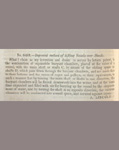
Lincoln Patent - Improved Method of Lifting Vessels over Shoals

Abraham Lincoln as he appeared directly after his nomination in 1860.

Hon. Abraham Lincoln of Illinois National Republican Candidate for the 16th President of the United States.

Political Debates

Lives and Speeches of Abraham Lincoln

Abraham Lincoln (in 1861).
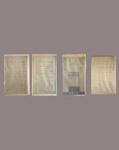
First Emancipation Proclamation

Portrait Abraham Lincoln's son Robert considered the best.

Nuyttens, November 15, 1863.
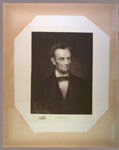
Portrait of Lincoln. F.B. Carpenter, 1864 - from life.


Portrait - Hesler

Trial of Abraham Lincoln by the Great Statesmen of the Republic

Prospectus of the Metropolitan Record

Running The "Machine"

Cartoon Showing Gen. George A. McClellan refering sarcastically to President Lincoln, who defeated him for the presidency in the election of 1864.
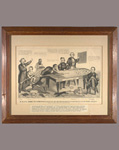
THE LITTLE GAME OF BAGATELLE, BETWEEN OLD ABE THE RAIL SPILITTER & LITTLE MACHE GUNBOAT GENERAL
.jpg)
Portrait - Dalton

Grand Reception of the Notables of the Nation at the White House, Washington, D.C., 1865.
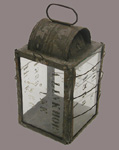
Lantern

Bloody Towel

Lincoln Memorial

Lincoln Sculpture

Death Bed of Lincoln
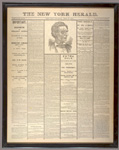
The New York Herald